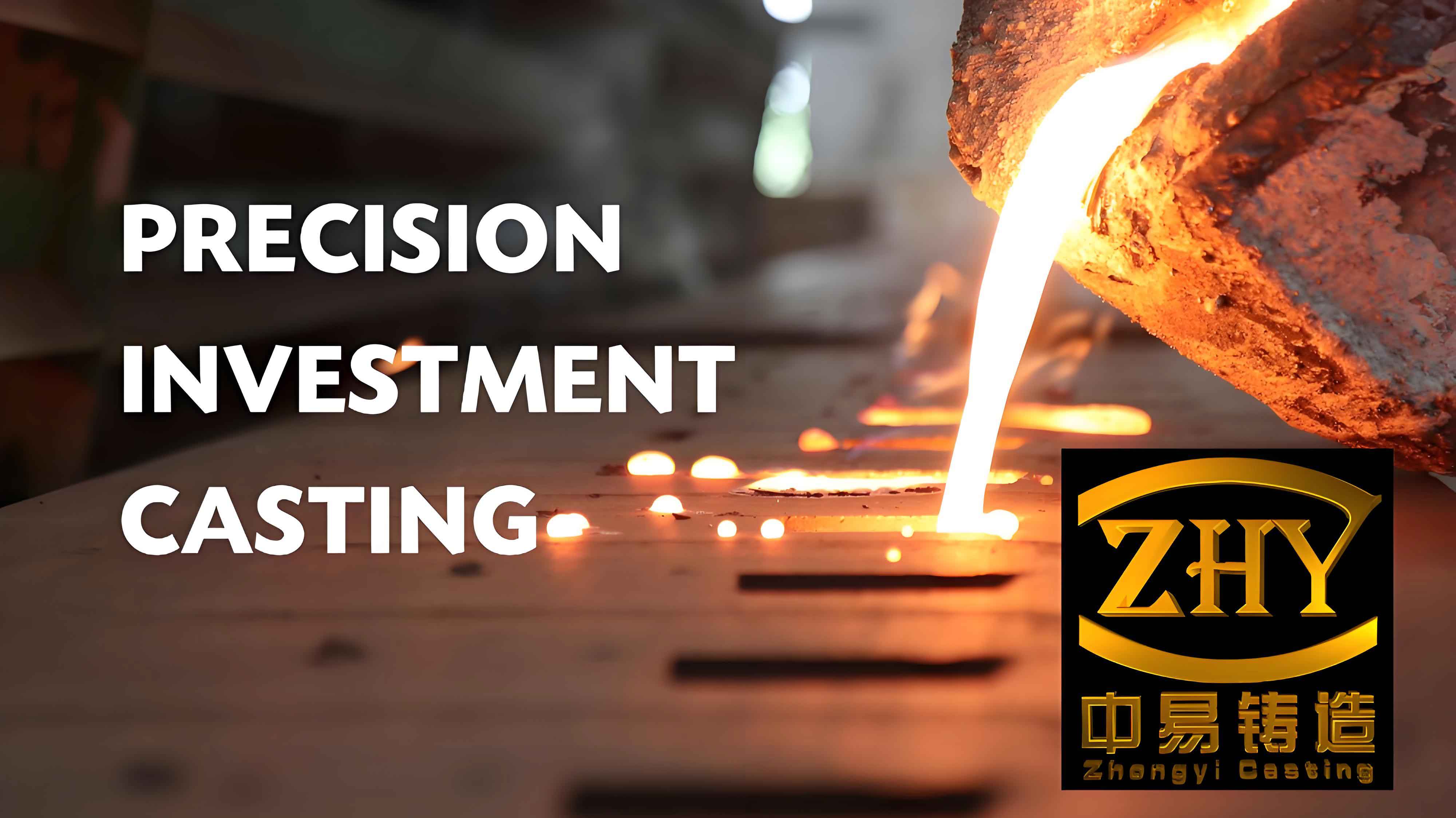Our factory, ZHY Casting, has transitioned from traditional forging and sand casting to investment casting for critical components in excavators. This shift, initiated in 1970, has significantly improved production efficiency, material savings, and component quality. Below, we detail the methodologies, parameters, and outcomes of adopting investment casting, supported by empirical data and process optimizations.

1. Investment Casting vs. Conventional Methods
Investment casting replaces forged or machined parts with precision-cast components, reducing material waste and machining time. Key comparisons are summarized in Table 1:
| Component | Original Method | Investment Casting | Machining Time Reduction | Weight Reduction (%) |
|---|---|---|---|---|
| Hydraulic Cylinder | Forging | Casting | 83% | 62% |
| Wear-Resistant Plate | Sand Casting | Casting | 58% | 64% |
The investment casting process eliminates intermediate steps like milling and drilling, directly achieving near-net shapes. For example, the hydraulic cylinder’s machining time dropped from 6 hours to 1 hour, with a 62% weight reduction.
2. Process Design and Parameters
2.1 Wax Pattern Formulation
Wax patterns are critical for dimensional accuracy. Our optimized wax blends (Table 2) ensure minimal shrinkage and high pattern strength:
| Blend ID | Paraffin (%) | Stearic Acid (%) | Recycled Wax (%) | Application |
|---|---|---|---|---|
| 1 | 50 | 50 | 0 | New Patterns |
| 2 | 6.5 | 0 | 93.5 | Recycled Patterns |
Recycled wax maintains fluidity and stability, reducing costs by 40%.
2.2 Slurry Composition
The slurry’s viscosity and hardening time directly affect mold strength. Two hardening methods—slow and fast—are compared below:
Slow Hardening (Table 3):
| Layer | Binder (kg) | Quartz (kg) | Clay (kg) | Deflocculant (%) | Viscosity (s) |
|---|---|---|---|---|---|
| Surface | 100 | 105 | 0 | 0.05 | 21–25 |
| Support | 100 | 95 | 5 | 0.05 | 18–22 |
Fast Hardening (Table 4):
| Layer | NH₄Cl (%) | Temp. (°C) | Harden Time (min) | Dry Time (min) |
|---|---|---|---|---|
| Surface | 23–25 | 18–27 | 2 | 10 |
| Support | 23–25 | 18–27 | 4 | 6 |
Fast hardening reduces cycle time by 35% but requires tighter viscosity control.
3. Shell Molding and Dewaxing
3.1 Shell Building
Shell thickness depends on component size:
- **<2 kg parts**: 6 layers
- **>2 kg parts**: 7 layers
Each layer is hardened in NH₄Cl (5–6% concentration) and air-dried to 80% moisture. Post-curing, shells are stored for 48 hours before dewaxing.
3.2 Dewaxing and Firing
Dewaxing uses steam or hot water (85–95°C) for 20–25 minutes. For complex geometries, a hybrid steam-water method prevents shell cracking.
Firing parameters (Figure 1):
- Preheat: 300°C for 2 hours
- Sinter: 850–900°C for 3 hours
- Cool: 600–700°C for浇注 (pouring)
This ensures minimal quartz expansion stress and avoids shell deformation.
4. Quality and Challenges
4.1 Metallurgical Integrity
Microstructural analysis of cast components (e.g., hydraulic cylinders) shows:
- Centerline Porosity: Grade 1 (ASTM E381)
- Dendritic Segregation: <5% area fraction
Compared to sand casting, investment casting reduces shrinkage defects by 70%.
4.2 Current Limitations
- Dimensional Variability: ±0.3 mm due to uneven shell strength.
- Labor Intensity: Manual sanding accounts for 30% of cycle time.
4.3 Future Directions
- Automation: Pneumatic sanding systems for large parts.
- Material Optimization: Replace high-cost alloys with low-carbon alternatives.
5. Mathematical Framework for Process Optimization
The relationship between shell thickness (t) and part weight (W) is modeled as:t=k⋅W1/3
where k=0.15 for geometries with aspect ratios <3.
For wax rheology, viscosity (η) follows:η=η0⋅eRTE
where E = activation energy (45 kJ/mol), R = gas constant, and T = temperature (K).
6. Economic Impact
Adopting investment casting has led to:
- Material Savings: 50% reduction in steel usage.
- Cost Reduction: $12/kg saved for hydraulic components.
7. Conclusion
Investment casting has revolutionized excavator component manufacturing at our plant, offering unparalleled precision and efficiency. By addressing current challenges through automation and material innovation, we aim to expand its applications to welded and forged parts, further aligning with sustainable production goals.
